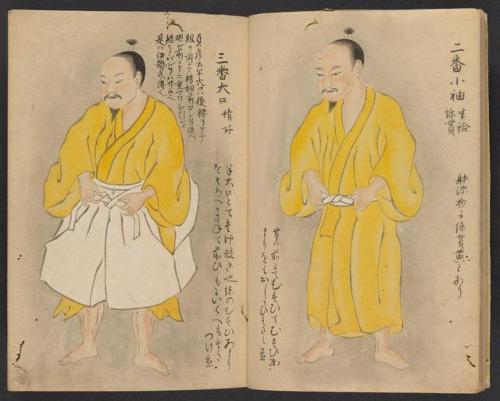No. 2 Construction Battalion

No. 2 Construction Battalion
Fighting for a country that didn’t want them.
On March 25 1917, Canada’s first and only black military unit left Halifax harbor for the Western Front. Six hundred soldiers, mostly from Nova Scotia, formed up as No. 2 Construction Battalion. Many had been trying to enlist since 1914, but winning this privilege had been an up-hill fight: for two years military authorities had turned down black recruits, telling them “This is a white man’s war.”
Finally, in 1916, Canada allowed black recruits entry into a segregated united of laborers. An additional 165 African-Americans crossed the border to join them, creating a full complement of 600 men. Winning the struggle to join up hardly ended discrimination. Except for the reverend, all officers were white, and even when they went to board their transport ship on March 25 the captain initially refused to let them on, saying that he would not let them travel on the same vessel as white soldiers.

The recruits hoped to be allowed to fight when they reached France, but instead the Canadian Expediotnary Force immediately downgraded them from a battalion to a company and assigned them to fell trees and prepare positions for white soldiers. They were not ever even issued with rifles. Their work was tedious and demoralizing, and many considered themselves failures even as they suffered casualties from artillery shells and poison gas.
The unit returned to Canada in 1919, but received no fanfare upon arrival. Much like America’s black soldiers, they returned to a country that did not value them or their sacrifice and actively oppressed their rights. Most of these veterans returned to poverty and unemployment. When they finally had their first reunion in 1982, only nine could attend from twenty known survivors. Their legacy and sacrifice has been revived since then. Although very few men were allowed the chance to serve, they began the first crack in the Canadian military’s institutionalized racism.

More Posts from Philosophical-amoeba and Others
Did You Know Large Wine Bottles Have Special Names?

Wine bottle names are… odd. Once you get large enough, the wine holders become named after biblical kings:
1.5 L Magnum: Equivalent to two standard 750 ml bottles.
3.0 L Double Magnum: Equivalent to two Magnums or four standard 750 ml bottles.
4.5 L Jeroboam : Equivalent to six standard 750 ml bottles.
6.0 L Imperial: Equivalent to eight standard 750 ml bottles or two Double Magnums. Why they stopped using kings here I don’t know.
9.0 L Salmanazar: Equivalent to twelve standard 750 ml bottles or a full case of wine!
12.0 L Balthazar: Equivalent to sixteen standard 750 ml bottles or two Imperials.
15.0 L Nebuchadnezzar: Equivalent to twenty standard 750 ml bottles.
Interestingly, I looked around and could not find why the names are what they are. The names just appeared, I guess, and everyone agreed to use them.
Molecule of the Day: VX


VX (C11H26NO2PS) is a colourless, odourless, oily liquid under room temperatures. It is a member of the V-series of nerve agents, and is an extremely potent poison - only 0.01 grams of it is needed to kill a person by skin contact. VX was recently implicated in the assassination of Kim Jong-nam, the half-brother of the North Korean leader Kim Jong-un, in Malaysia.
VX is a potent inhibitor of acetylcholinesterase, which breaks down the neurotransmitter acetylcholine into acetic acid and choline. The normal function of the enzyme is to regulate the concentration of acetylcholine within the synaptic cleft, so as to control the frequency of binding of acetylcholine to cholinergic receptors on the postsynaptic cell membrane and hence the transmission of impulses across the synapse.

Consequently, the inhibition of acetylcholinesterase results in a rapid increase in the synaptic concentration of acetylcholine, as the presynaptic knob continues to synthesise it and secrete it into the synaptic cleft. As a result, the cholinergic receptors on the postsynaptic cell membrane are continually stimulated, and a rapid series of action potentials are triggered. This results in muscle spasms and eventual paralysis, leading to death by asphyxiation due to paralysis of the diaphragm.

VX exposure is usually treated using an injection of atropine and pralidoxime. Atropine inhibits certain cholinergic receptors, reducing the binding of acetylcholine to receptors and thus the triggering of action potentials. On the other hand, one end of pralidoxime binds to acetylcholinesterase and the other binds to the phosphate group of VX, which causes the VX molecule to detach from the enzyme together with the pralidoxime molecule (see below). This restores the ability of acetylcholinesterase to hydrolyse acetylcholine, hence reducing its synaptic levels.

VX is synthesised from phosphorus trichloride over multiple steps; first, it is methylated, reacted with ethanol, then transesterified with N,N-diisopropylaminoethanol to produce QL. This is then oxidised with sulfur, and isomerised via heating to produce VX.


Science Fact Friday: Tetrodotoxin, ft. a small gif because I’m avoiding my real obligations. Why does tetrodotoxin not affect its host? More studies need to be done but at least a few species possess mutated sodium ion channels. The tetrodotoxin can’t interact efficiently with the altered channels.
Another interesting tidbit: Animals with tetrodotoxin can lose their toxicity in captivity. It is suspected that the animals accumulate the toxic bacteria as a side-effect of their diet. After several years of captivity on a tetrodotoxin-bacteria-free diet, the bacterial colonies living in the animals die, residual toxin is cleared from the system, and the animal is safe to handle.
+heroes of nusantara: multatuli
YES, I, Multatuli, “who have suffered much,”—I take the pen. I do not make any excuses for the form of my book,—that form was thought proper to obtain my object…. I will be read! Yes, I will be read. I will be read by statesmen who are obliged to pay attention to the signs of the times; by men of letters, who must also look into the book of which so many bad things are said; by merchants, who have an interest in the coffee auctions; by lady’s-maids, who read me for a few farthings; by governors-general in retirement; by ministers who have something to do; by the lackeys of these Excellencies; by mutes, who, more majorum, will say that I attack God Almighty, when I attack only the god which they made according to their own image; by the members of the representative chambers, who must know what happens in the extensive possessions over the sea which belong to Holland….
Ay, I shall be read!

Eduard Douwes Dekker was born in Amsterdam, March 2nd 1820. His father was a ship’s captain and intended for his son to have a career in trade. This humdrum prospect disgusted Douwes Dekker and in 1838 he obtained a post as a civil servant on the island of Java. During the period between 1848 and 1851 Douwes Dekker eventually rose to serve as assistant resident in various regencies in the Indonesian archipelago including Natal, North Sumatra, Manado in Sulawesi and Ambon in the Moluccas. In 1857 he was transferred to Lebak, in the Bantam residency of Java (now Banten province). By this time, however, all the secrets of Dutch administration were known to him, and he had begun to openly protest about the abuses of the colonial system. Consequently, he was threatened with dismissal from his office for his openness of speech. Douwes Dekker resigned his appointment and returned to the Netherlands.
He was determined to expose in detail the scandals he had witnessed, and he began to do so in newspaper articles and pamphlets. Little notice, however, was taken of his protestations until, in 1860, he published his novel Max Havelaar under the pseudonym of Multatuli. Douwes Dekker’s new pseudonym, which is derived from Latin, means, “I have suffered much”, or, more literally “I have borne much” referring to himself, as well as, it is thought, to the victims of the injustices he saw. An attempt was made to suppress the inflammatory book, but in vain; it was read all over Europe. Apologists for colonialism accused Douwes Dekker’s horrific depictions of being exaggerated.

[ his statue in amsterdam ]
Although it was translated into English in 1868, the text wasn’t available in the author’s home country until over a century later in 1972. Collectively, Multatuli’s Max Havelaar has been translated into 34 different languages worldwide since its initial publication. Credited as the stirring initiation of the nationalist movement responsible for the termination of Dutch colonization of Indonesia following World War II, Max Havelaar’s legacy is not confined to literary accomplishment, but can be considered a work of great political success and inspired social liberation. Max Havelaar’s influence on the national movement ultimately culminated in the passionate command to end decolonization worldwide. The story of Max Havelaar illuminates the inhumane and political injustices brutally imposed upon the native peoples of the region.
Sigmund Freud listed Multatuli as one of his favorite writers. Multatuli’s brother, Jan Douwes Dekker, was the grandfather of Ernest Douwes Dekker (also known as Danudirja Setiabudi, a National Hero of Indonesia). There is a museum for him in Amsterdam. Multatuli is also known as the person who coined the term emerald of equator, a poetic nickname of Indonesia.

This book is an introduction…. I shall increase in strength and sharpness of weapons, according as it may be necessary. Heaven grant that it may not be necessary!… No, it will not be necessary! For it is to thee I dedicate my book: WILLIAM THE THIRD, King, Grand Duke, Prince,… more than Prince, Grand Duke, and King,… EMPEROR of the magnificent empire of INSULIND, which winds about the equator like a garland of emeralds!… I ask THEE if it be thine IMPERIAL will that the Havelaars should be bespattered with the mud of Slymerings and Drystubbles; and that thy more than thirty millions of SUBJECTS far away should be ill treated and should suffer extortion in THY name!
source: wikipedia; culture trip
quotes from bartleby, excerpt of max havelaar
further reading: paper on multatuli






Dress for the job you want.
Yoshiie Ason yoroi chakuyōzu 義家朝臣鎧着用次第 by Sadatake Ise is a pictorial work on how to put on Japanese Samurai armor. The subject is famed Samurai warrior Minamoto No Yoshiie.
Find more amazing rare books we’ve recently digitized from our Freer | Sackler branch library in our book collection, Japanese Illustrated Books from the Edo and Meiji Period.

BHL Book Feature: The Birds of Singapore Island
Our book feature this week is The Birds of Singapore Island (1927), co-authored by John Alexander Strachey Bucknill and Frederick Nutter Chase with SciArt by Gerald Aylmer Levett-Yeats, and published by the Raffles Museum. This work is the first book on the birds of Singapore!
Our featured illustration is a Greater Racket-tailed Drongo (Dicrurus paradiseus platurus). This book is written in an informal, non-scientific style to appeal to tourists and bird enthusiasts, and the description of the Greater Racket-tailed Drongo is a good example of this writing style.

All this week, we will be sharing several of the 31 plates from The Birds of Singapore Island, which was digitized for BHL by National Library Board, Singapore. You can view all of the plates from this work in our Flickr album, and check out our blog post, which was written by Ong Eng Chuan, Senior Librarian of the National Library Board, Singapore.
Survivorship Bias
I have posted about survivorship bias and how it affects your career choices: how a Hollywood actor giving the classic “follow your dreams and never give up” line is bad advice and is pure survivorship bias at work.
When I read up on the wikipedia page, I encountered an interesting story:
During WWII the US Air Force wanted to minimize bomber losses to enemy fire. The Center for Naval Analyses ran a research on where bombers tend to get hit with the explicit aim of enforcing the parts of the airframe that is most likely to receive incoming fire. This is what they came up with:

So, they said: the red dots are where bombers are most likely to be hit, so put some more armor on those parts to make the bombers more resilient. That looked like a logical conclusion, until Abraham Wald - a mathematician - started asking questions:
- how did you obtain that data? - well, we looked at every bomber returning from a raid, marked the damages on the airframe on a sheet and collected the sheets from all allied air bases over months. What you see is the result of hundreds of those sheets. - and your conclusion? - well, the red dots are where the bombers were hit. So let’s enforce those parts because they are most exposed to enemy fire. - no. the red dots are where a bomber can take a hit and return. The bombers that took a hit to the ailerons, the engines or the cockpit never made it home. That’s why they are absent in your data. The blank spots are exactly where you have to enforce the airframe, so those bombers can return.
This is survivorship bias. You only see a subset of the outcomes. The ones that made it far enough to be visible. Look out for absence of data. Sometimes they tell a story of their own.
BTW: You can see the result of this research today. This is the exact reason the A-10 has the pilot sitting in a titanium armor bathtub and has it’s engines placed high and shielded.
-
 31n13 liked this · 1 year ago
31n13 liked this · 1 year ago -
 blakhanside00 reblogged this · 2 years ago
blakhanside00 reblogged this · 2 years ago -
 foulwitchdealer liked this · 4 years ago
foulwitchdealer liked this · 4 years ago -
 sweatydazeface liked this · 4 years ago
sweatydazeface liked this · 4 years ago -
 polgrensgyal reblogged this · 4 years ago
polgrensgyal reblogged this · 4 years ago -
 polgrensgyal liked this · 4 years ago
polgrensgyal liked this · 4 years ago -
 eros-military-bujutsu reblogged this · 4 years ago
eros-military-bujutsu reblogged this · 4 years ago -
 onlyhaveeyes4you liked this · 4 years ago
onlyhaveeyes4you liked this · 4 years ago -
 wizardkoolkelpie reblogged this · 5 years ago
wizardkoolkelpie reblogged this · 5 years ago -
 yeh-canada reblogged this · 5 years ago
yeh-canada reblogged this · 5 years ago -
 making-moriartea liked this · 5 years ago
making-moriartea liked this · 5 years ago -
 amalamalakoi liked this · 5 years ago
amalamalakoi liked this · 5 years ago -
 queerhistorymajor reblogged this · 5 years ago
queerhistorymajor reblogged this · 5 years ago -
 hondayondas reblogged this · 5 years ago
hondayondas reblogged this · 5 years ago -
 jiniaiko reblogged this · 5 years ago
jiniaiko reblogged this · 5 years ago -
 gooooooser liked this · 5 years ago
gooooooser liked this · 5 years ago -
 xllance liked this · 5 years ago
xllance liked this · 5 years ago -
 fleetwood-wac liked this · 5 years ago
fleetwood-wac liked this · 5 years ago -
 moments-in-history reblogged this · 5 years ago
moments-in-history reblogged this · 5 years ago -
 grumpydoctorhello liked this · 5 years ago
grumpydoctorhello liked this · 5 years ago -
 ed3997 liked this · 5 years ago
ed3997 liked this · 5 years ago -
 bewilderedblackman reblogged this · 5 years ago
bewilderedblackman reblogged this · 5 years ago -
 bewilderedblackman liked this · 5 years ago
bewilderedblackman liked this · 5 years ago -
 anafadeya liked this · 5 years ago
anafadeya liked this · 5 years ago -
 diemnoctem liked this · 5 years ago
diemnoctem liked this · 5 years ago -
 candycarmelle liked this · 5 years ago
candycarmelle liked this · 5 years ago -
 whatimeanwhat liked this · 5 years ago
whatimeanwhat liked this · 5 years ago -
 loudelx reblogged this · 5 years ago
loudelx reblogged this · 5 years ago -
 loudelx liked this · 5 years ago
loudelx liked this · 5 years ago -
 redacteded liked this · 5 years ago
redacteded liked this · 5 years ago -
 kaptainkassa reblogged this · 5 years ago
kaptainkassa reblogged this · 5 years ago -
 ravenofsmalldeath liked this · 5 years ago
ravenofsmalldeath liked this · 5 years ago -
 unobtainius reblogged this · 5 years ago
unobtainius reblogged this · 5 years ago -
 unobtainius liked this · 5 years ago
unobtainius liked this · 5 years ago -
 the-major liked this · 5 years ago
the-major liked this · 5 years ago -
 3-0-2 liked this · 6 years ago
3-0-2 liked this · 6 years ago -
 thecaravaggisti liked this · 6 years ago
thecaravaggisti liked this · 6 years ago -
 ajays-worlds liked this · 6 years ago
ajays-worlds liked this · 6 years ago -
 rensixrs liked this · 6 years ago
rensixrs liked this · 6 years ago -
 mandycroyance reblogged this · 6 years ago
mandycroyance reblogged this · 6 years ago -
 cactustreesmotel reblogged this · 6 years ago
cactustreesmotel reblogged this · 6 years ago -
 darkforestroads liked this · 6 years ago
darkforestroads liked this · 6 years ago -
 fetishinialfredo12 reblogged this · 6 years ago
fetishinialfredo12 reblogged this · 6 years ago -
 fetishinialfredo12 liked this · 6 years ago
fetishinialfredo12 liked this · 6 years ago -
 iamidentical reblogged this · 6 years ago
iamidentical reblogged this · 6 years ago
A reblog of nerdy and quirky stuff that pique my interest.
291 posts













